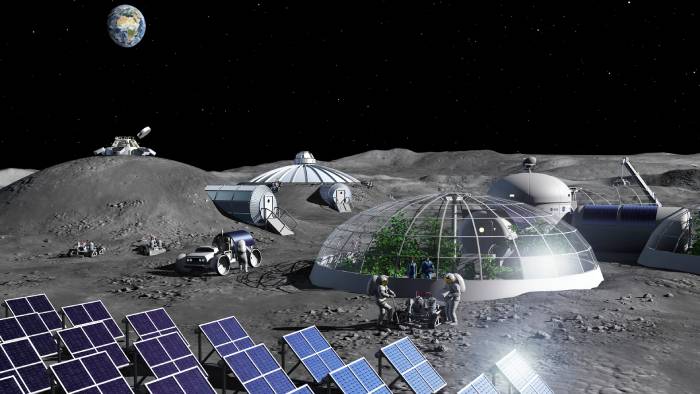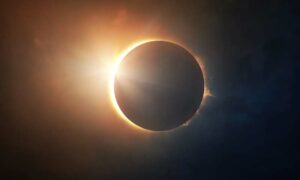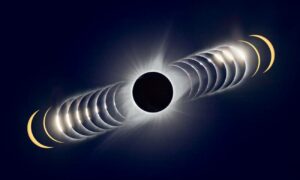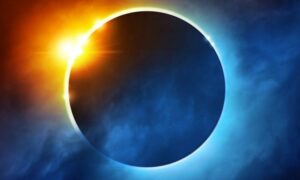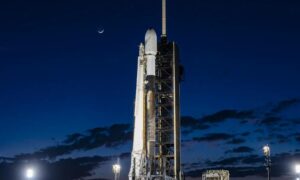Scientists have grown plants in lunar soil using samples obtained during the Apollo missions to the moon, which is a world first. Plants have never been sprouted and grown on Earth on soil from another celestial body before.
The research could pave the way for growing plants on the moon that provide oxygen and food, which is important given NASA’s Artemis program’s goal of landing the first woman and the first person of colour near the lunar south pole later this decade.
However, the tests also show how challenging it is for plants to thrive in lunar regolith, or dirt, which differs significantly from natural environments on Earth.
The plant experiment was detailed in a report published in the journal Communications Biology on Thursday.
The space shuttle and the International Space Station have carried a variety of plants, including food crops. Plant samples have even been utilised to demonstrate that moon samples do not pose a threat to life on Earth.
“Plants helped establish that the soil samples brought back from the moon did not harbor pathogens or other unknown components that would harm terrestrial life, but those plants were only dusted with the lunar regolith and were never actually grown in it,” said study coauthor Anna-Lisa Paul, a research professor of horticultural sciences at the University of Florida Institute of Food and Agricultural Sciences.
Paul and research coauthor Rob Ferl, a distinguished professor of horticultural sciences at the University of Florida’s Institute of Food and Agricultural Sciences, wanted to explore if seeds might grow in lunar soil.
“For future, longer space missions, we may use the Moon as a hub or launching pad,” Ferl said in a statement. “So, what happens when you grow plants in lunar soil, something that is totally outside of a plant’s evolutionary experience? What would plants do in a lunar greenhouse? Could we have lunar farmers?”
Historical samples
It’s been a long time coming; the researchers’ first proposal and request for moon samples was 15 years ago. 18 months ago, the request was approved.
NASA provided the research team with 4 grammes of lunar material recovered during the Apollo 17 mission. NASA’s Apollo sample curator, Ryan Zeigler, found the scientific merit in sharing more samples from various Apollo missions. He sent them 12 grammes (2.7 tablespoons) of lunar samples from the Apollo 11, 12, and 17 missions.
“That made a big difference in enabling us to take a deeper look into the science and the effects of lunar regolith on plants than we would have otherwise been able to do,” Paul said.
As pots, the researchers used thimble-sized wells. These plastic trays are typically used to cultivate cells.
The researchers put a gramme of lunar soil to each well, along with nutrients and water, and a few seeds of Arabidopsis thaliana, sometimes known as thale cress, a tiny flowering plant native to Eurasia and Africa.
Thale cress is a popular plant specimen among scientists because it has been extensively examined and its genetic code has been mapped, allowing researchers to investigate how the alien soil altered the plant’s gene expression. The plant has also travelled to orbit aboard the shuttle and the International Space Station, providing the team with space data to compare.
Arabidopsis seeds were also sown on a synthetic material that mimicked lunar soil, as well as volcano ash and other harsh environment substrates.
Almost all of the seeds placed in the dark lunar soil grew and began to grow, much to the surprise of the researchers.
“We did not predict that,” Paul said. “That told us that the lunar soils didn’t interrupt the hormones and signals involved in plant germination.”
Antagonistic soil
The Arabidopsis sprouts, on the other hand, struggled to adapt to the lunar soil.
In contrast to plants grown in Earth soils, the seedlings were smaller, grew slower, and varied in size. The roots were severely hampered. The plants also took longer to extend their leaves than Arabidopsis plants growing in volcanic ash. Some lunar soil plants had reddish dark pigments in their leaves, indicating that they were stressed.
Three of the smaller, darker plants had more than 1,000 genes that were mostly related to stress on a genetic level.
“At the genetic level, the plants were pulling out the tools typically used to cope with stressors, such as salt and metals or oxidative stress, so we can infer that the plants perceive the lunar soil environment as stressful,” Paul said.
“Ultimately, we would like to use the gene expression data to help address how we can ameliorate the stress responses to the level where plants — particularly crops — are able to grow in lunar soil with very little impact to their health.”
The plants that battled the most were grown in mature lunar soil and coloured purple as a result of oxidative stress. The plants cultivated in the Apollo 12 and 17 samples seemed to thrive better since the soils taken on the Apollo 11 mission were more exposed to the harsh space environment.
Iron particles and tiny glass shards can be found on the lunar surface, which is constantly assaulted by cosmic rays and solar wind. All of these factors may impede plant growth.
“Even the plants that looked healthy were struggling to stay looking healthy,” Paul said. “They grew in lunar regolith, but they had to deal with it at a metabolic level in order to maintain that kind of health.”
Greenhouses in space
The researchers want to do more research to see how growing plants in the lunar environment affects the soil.
“The Moon is a very, very dry place,” said study coauthor Stephen Elardo, UF assistant professor of geology. “How will minerals in the lunar soil respond to having a plant grown in them, with the added water and nutrients? Will adding water make the mineralogy more hospitable to plants?”
These plants on the moon might extract materials from the lunar soil, such as metallic iron, and make them usable.
More research could help the researchers figure out the most effective technique to grow plants in lunar soil and minimise the stressors discovered during the study. The researchers also intended to learn more about the nutritional content of these plants, as well as how soil affects it.
While thale cress is edible, it is neither tasty nor a food crop. It is, nevertheless, related to broccoli, kale, turnips, and cauliflower.
The plant growth discovery was “very thrilling,” according to NASA’s chief scientist for astrobionics Sharmila Bhattacharya, who added that the study offered several follow-up prospects for scientists. Bhattacharya did not take part in this research.
“We need to work out how to make the plants grow even better in this regolith substrate,” Bhattacharya wrote in an email. “For example, do we need to add other components to help the plants along, and if so, what are they? Are there other plants that can adapt better to these regolith substrates, and if so, what traits make them more robust to these environments?
“That’s what’s so exciting about science; each new finding leads to more unique and transformative results down the road, which we can then use to help improve sustainability for our future space exploration missions!”
The researchers saw their experiment as a hopeful sign of what is possible as humanity push the limits of space travel.
“It’s amazing that the plant still grows in this harsh environment,” Elardo said. “It’s stressed, but it doesn’t die.”
“When humans move as civilizations to stay somewhere, we always take our agriculture with us,” Ferl said. “The idea of bringing lunar soil into a lunar greenhouse is the stuff of exploration dreams.”
- Crypto Update: These Top 5 Altcoins Are Outperforming Bitcoin - April 16, 2024
- Top 5 Most Populated Cities in South America - April 16, 2024
- Top 15 Low-cost Countries for Family Travel - April 16, 2024

